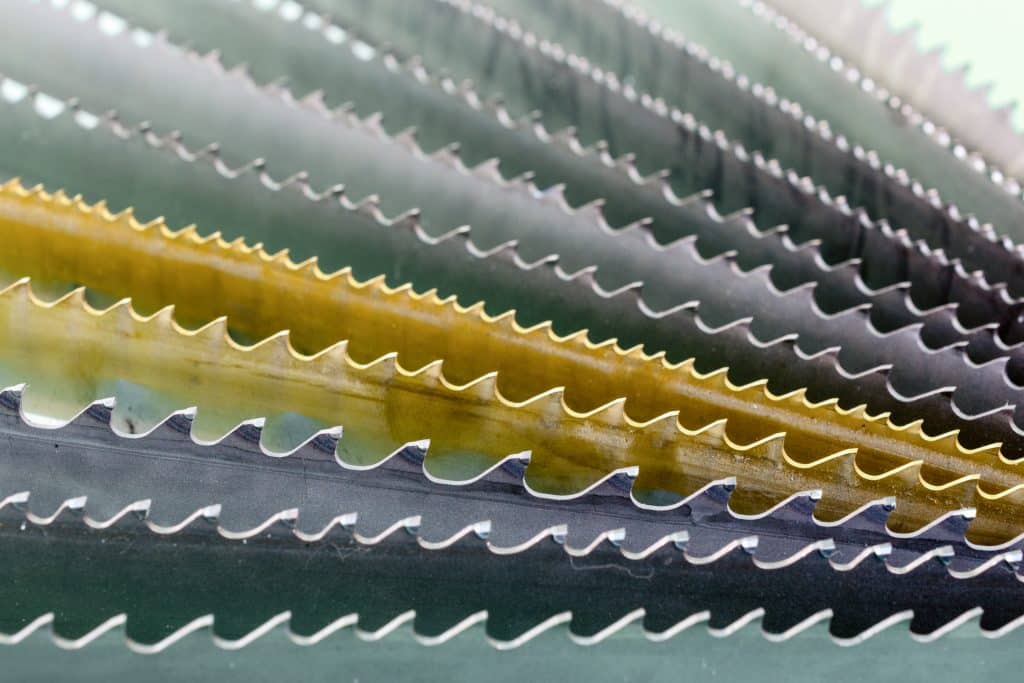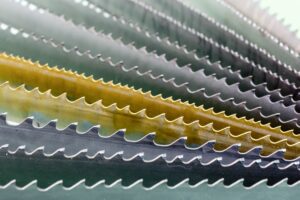With a wide range of bandsaw blades available, choosing the right one for your job can make the difference between creating an adequate or professional cut. Regardless of what material you would like to cut, getting a precise, clean, and smooth cut is essential to ensure you are cutting parts correctly.
The factors that you need to be thinking about include:
What type of material are you cutting?
Generally, you need to have blades with different shaped teeth for different materials. Factors such as materials type, toughness, hardness, and sectional geometry all contribute to tooth geometry. The main types available are:
- Regular tooth. These are recommended for cutting all ferrous materials along with general-purpose cutting operations. Regular blades tend to have a smooth, rounded gullet at the base of the tooth.
- Hook tooth. Developed for general non-ferrous and softer metals, as well as plastics and wood, the hook tooth form has a positive rake of around 10° and a deeper gullet to help clear swarf and cut material.
- Skip tooth. The skip tooth configuration features a nearly flat gullet to give a larger chip, making it ideal for cutting almost any softer material such as plastics, wood, and soft, non-ferrous metals at higher speeds.
- Variable pitch. Used as an all-purpose and contouring blade type, the variable pitch blade has non-uniform distances between teeth and variations in tooth sizes. These are mostly used to reduce chatter and vibration when cutting tubular and other hollow sections.
As well as tooth form and pitch, the other major factor that affects how well a blade can cut through different materials is based on the ‘set’ of the tooth along the blade.
Tooth sets can be broken down as:
- Raker tooth. Generally based on a three-tooth sequence with a uniform set angle of left set, right set, and straight, though sequences can also run at a series of either five or seven teeth too. The raker tooth set can produce a smoother cut finish.
- Straight tooth. Straight tooth blades generally produce narrower cuts in softer materials and are used when you need more precision.
- Alternate tooth. Every tooth is set in an alternating sequence – left and right -and are used for quick removal of material when finish is not that critical.
- Wavy tooth. This type of blade features groups of teeth set to each side within the overall set pattern. The teeth have varying amounts of set in a tightly controlled pattern, and the wavy set is typically used with fine pitch products to reduce noise, vibration and burr when cutting thin, interrupted applications.
Other factors to consider include material thickness, teeth on the work, and complexity of what is being cut. Typically, thicker metals, plastics or wood sections require saws with bigger blades, while hard materials require saws with larger teeth. The actual number of teeth on the work is crucial, with at least three on each section of material being worked. With complex cuts or patterns, if you’re making cuts that require extreme precision and accuracy you’ll need to choose a blade with small teeth.
Make sure you have the right blade for the material that you have and the cut you intend, and your project will end up with a professional finish.
Published 6th April 2018


